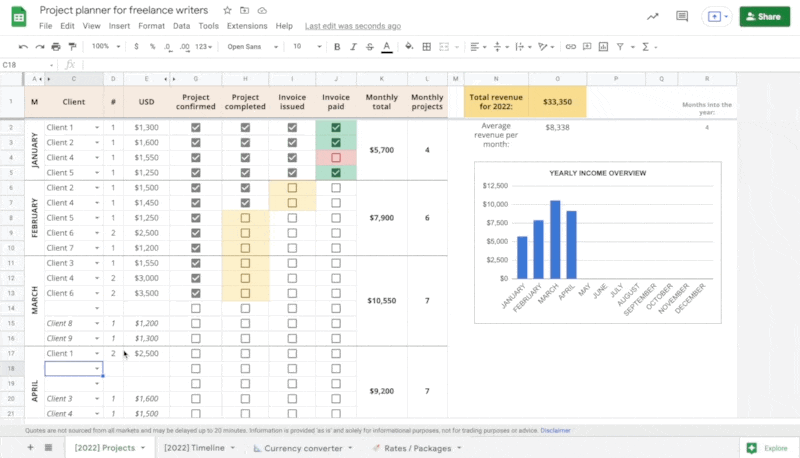Every so often, it's a good idea to set aside some time and map out what your ideal workday looks like.
The reason: You can't work toward that ideal until you know what it is.
Sit down and write it out, hour by hour.
Every time I do this, I'm surprised by what I learn.
Sometimes I find that I need to build in more time away from my computer throughout the day with short breaks for walks, time outdoors, etc.
Other times, I've discovered insights around what type of work I enjoy doing most (as well as what work I don't want to do more of.)
I also pinpoint when I'm most productive...and when that productivity starts to drop off.
Simply documenting what you want your workday routine to look like means you can then nail down what you want/need to accomplish each day, which activities you want to ritualize, etc.
Cheatsheet to help you map your ideal workday
Here's how I do this (feel free to copy/paste this and use it for yourself!)
I wake up at ____________.
Before I jump into work-related tasks for the day, I spend _____ minutes doing ___________.
I start working at __________.
The first thing I do is _____________________________.
My first short break of the day is around ________, and during that time I ___________________.
Once that’s done, I devote ___________ (time) to ___________________ (task). With any remaining time, I do (task) ______________ before lunch.
For lunch, I take a _____________ minute break and eat something like _______________.
After lunch, I take care of _______________________ (task) for ___________ (time).
My mid-afternoon break is _____ minutes long, and during that time I _________________(task).
I wrap up the rest of the afternoon with ___________________(task/activity).
I’m done working for the day at ____________.
If I have any spare time during the day, I fit in some _________________ (tasks).
Using those answers, I then put together a prioritized to-do list (with the most important things first) and then create a loose schedule for myself, usually one week at a time.
Note: Most of the time, I find I'm most productive using the Pomodoro Technique (AKA working in short sprints), but others may find that methods like time blocking or themed days work better for them.
It's worth experimenting to figure out what model is most successful and productive for you.
If you take the time to answer these questions and find that your ideal workday is *impossible* within your current role, workload, or life situation, use it as a springboard to think about how you can get there.
It's waaaaaay cheaper than therapy, and it's a minimal time investment that can teach you a lot about your work brain, your priorities, and what steps you can take moving forward to get closer to that ideal Monday-Friday workflow.
If you’re looking for a spreadsheet format that’ll help you get a better grasp on your monthly workload (so you STOP over-booking yourself into burnout!), this $59 resource is a must-have.
If you're looking for inspiration or are curious about what my average workday looks like, I recently discussed that with my podcast co-host, Emma.



